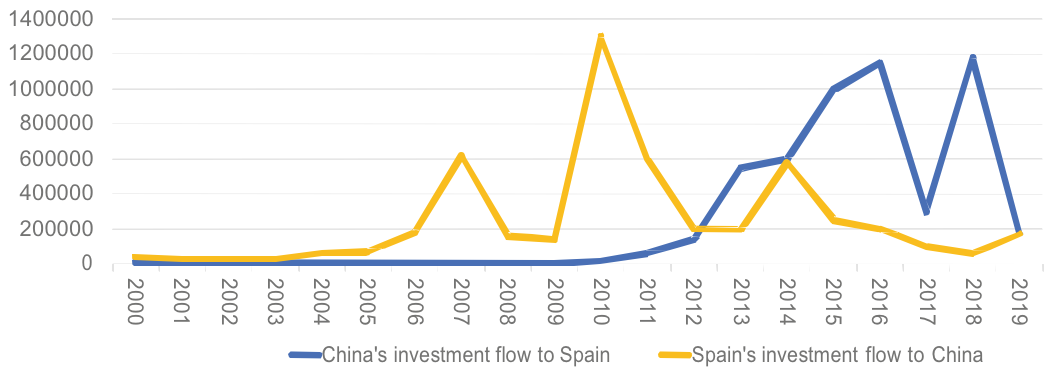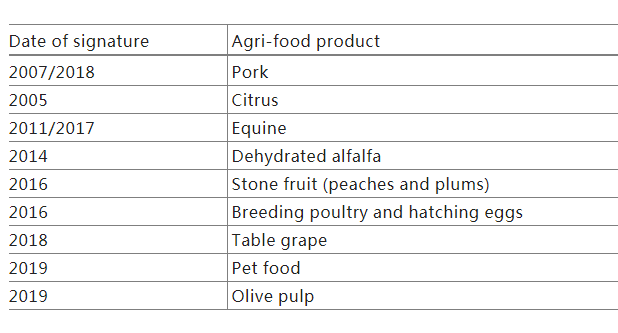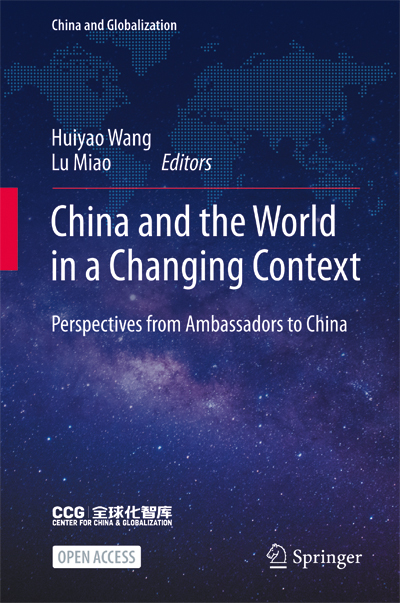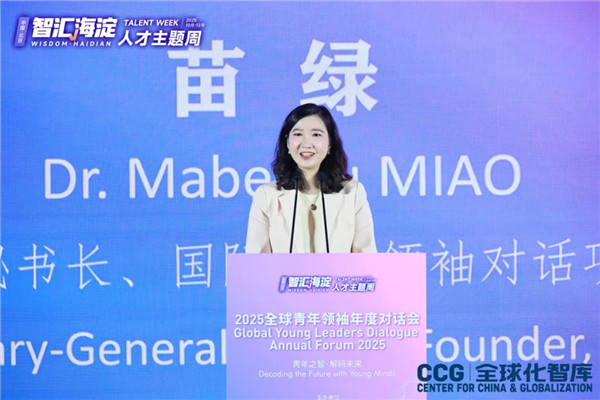Spanish Ambassador: Perspectives on Spain–China Relations
April 06 , 2022

“Chinese authorities are also seeking to create smart cities in an attempt to respond to the challenges posed by its rapid urban development, providing higher quality services as urbanization rates reach 60%. As a consequence, there are numerous market opportunities within the construction, transportation and logistics sectors.”
——H.E. Mr. Rafael Dezcallar de Mazarredo, Ambassador of the Kingdom of Spain to the People’s Republic of China
The establishment of diplomatic relations between Spain and China in 1973 laid the foundations for the creation of a bilateral commercial framework that has contributed significantly to the extraordinary economic transformation of both Spain and China since the late 1970s.
The Government of Spain has repeatedly shown its determination to maintain strong trade relations with China over the course of the past decades. The participation of the Spanish President of the government in the first OBOR Forum in May 2017; the participation of the Minister of Foreign Affairs, European Union and Cooperation in the second OBOR Forum in April 2019; the confirmation of Spain as a founding member of the Asian Infrastructure Investment Bank (AIIB) in 2015; the official visit of the Minister of Industry, Commerce and Tourism to China in 2018; and the presence of Spain in the three latest China International Import Expos (CIIE) are all representative examples of this determination.
China is a priority trade partner in Spain’s strategy to attain a greater level of market diversification and internationalization. In fact, Spain has already set out a strategic industry-specific action plan that matches local companies with suitable opportunities in China’s emerging industries.
China is currently Spain’s leading trading partner in Asia; however, the full potential of bilateral trade and investment flows is yet to be realized. After the COVID-19 outbreak, the external sector has become a key driving force for the recovery of the global economy, just as it had previously during the 2008 global financial crisis. The continued deepening of economic cooperation, based on the principles of reciprocity and non-discrimination, is, therefore, fundamental to stimulating economic growth.
This article introduces the main characteristics of Spain–China trade relations, focusing on strategic sectors and the economic impact of COVID-19, and sets out a series of practical measures to overcome challenges and exploit the existing opportunities amid the global economic slowdown.
2. Spain–China Trade Relations Before the COVID-19 Outbreak
Spain strengthened trade relations with China with a relative delay compared to its neighboring countries, and this delay has hampered its overall positioning within the Chinese market. In 2019, Spain’s foreign trade coverage ratio with China was 27.4%; this ratio was considerably higher in Germany, France and Italy, reaching 125.1%, 65.3% and 41%, respectively.
Multiple factors have contributed to this delay. Among them, Spain has considerable number of small-sized and tech-oriented companies, while limited international experience and preference for geographically and culturally closer markets in many Spanish companies and their lack of familiarity with the Chinese market.
The establishment of diplomatic relations between Spain and China in 1973 did not lead to the immediate creation of a bilateral commercial framework. It was not until 1979 when Spain’s first Economic and Commercial Office in Beijing was opened and trade and investment flows between Spain and China remained sluggish during the 1980s.
However, Spain–China trade relations have experienced a dramatic boost in recent decades as a consequence of the rapid adaptation of Spanish companies to China’s evolving needs. Spanish exports to China have been on the rise for the last 20 years (Fig. 1), and the number of Spanish exporting companies has increased from 1656 in 2000 to 14,059 in 2019. During the 2015–2019 period, Spanish exports to China grew by 55.1%, which can partially be attributed to Spain’s highly competitive industrial goods and premium agri-food goods.

Fig. 1 Spanish Exports to China. Source Data Comex

Fig. 2 Bilateral Investment Flows. Source Data Invex
Spain’s outward investment to China has also matched the pace of China’s opening-up, its technological needs and its growing demands in the service sector. Investment flows from China to Spain, on the other hand, are strictly guided by Chinese government policies and growth objectives, having mainly targeted high added-value sectors in recent years. Most of the leading Chinese multinational enterprises, such as ICBC, COSCO, Xiaomi, Lenovo, Air China, AVIC, Haier, BYD, Mindray, Huawei and Aliexpress, have established operations in Spain, creating job opportunities for local citizens.
However, data shows that there is room for further development in bilateral investment flows (Fig. 2). China is the 20th largest destination of Spanish investment outflows, with a total investment stock of EUR 3.169 billion that accounts for 0.7% of Spain’s total outward stock. China is the tenth largest investor in Spain, with a total investment stock of EUR 11.434 billion, which accounts for 2.5% of Spain’s total inward investment stock.
2.1 Opportunity Sectors for Spanish Companies
A detailed analysis by sector allows us to identify trade opportunities for Spanish companies in the Chinese market, following China’s new growth model based on sustainability and innovation, which marks a qualitative leap in the remarkable transformation of the Chinese economy during the last four decades.
2.1.1 Agri-food Sector and Consumer Goods
The rise of a well-informed and cosmopolitan urban middle class, with a purchasing power on par with that of the EU, has resulted in a high demand for Spain’s medium- and high-quality consumer goods, especially food products.
Pork is an essential ingredient in the Chinese diet. The recent African swine flu outbreak had a profound impact on China’s large pig herd and domestic supply, leading to an increase in the demand for pork imports. In 2019, Spain became the leading exporter of pork meat products to China, ahead of Germany, Brazil and the United States, totalling EUR 811 million, a 149% year-on-year increase. The entry into force of a new pork protocol has helped the promotion of gourmet products, such as ham with bone, and encouraged the opening of a larger number of authorized exporting companies.
Spain is China’s main supplier of olive oil. Its total export value amounted to EUR 109 million in 2019, a 7.2% year-on-year increase. Spanish olive oil has gained in popularity as a healthy product on consumer tables in China.
The EU-China Agreement on Cooperation and Protection of Geographical Indi- cations includes eight geographical indications of Spanish wines, which will enhance their brand positioning in the premium wine segment. In terms of value, Spain was China’s fifth largest wine exporter in 2019, only after Australia, France, Chile and Italy.
The signing of citrus, stone fruit and table grape protocols has brought new opportunities for Spanish companies within the fruit and vegetable sector. In 2019, Spain’s export sales to China amounted to EUR 46 million, a year-on-year increase of 56%.
Within the consumer goods sector, China’s cosmetics industry has experienced dramatic growth since 2015, due to the rise of e-commerce as a sale and distribution channel. Brands such as ISDIN, MARTIDERM, and NATURA BISSÉ enjoy enormous popularity across China, having even developed products catering to local consumers.
Spain’s fashion industry products are seen as high quality and innovative by Chinese consumers. INDITEX is among the most successful Spanish companies in China within the fashion industry. Other Spanish companies have also entered China’s luxury goods market through e-commerce platforms and WeChat cross-border stores.
2.1.2. Technology and Industrial Goods
The “Made in China 2025” plan, launched six years ago by the Chinese government to upgrade the country’s production model through innovation policies, should ease the entry of Spanish products and companies into those industries where domestic companies are not able to provide high-value-added products.
China is the world’s largest vehicle market. Spain’s automotive parts and components manufacturers, such as GRUPO ANTOLÍN, GESTAMP and GRUPO MONDRAGÓN, have established operations in China, setting up factories, subsidiaries and research and development centers across the country. In 2019, the total value of exports in the automotive parts and components sector reached EUR 373 million, a considerable increase compared to EUR 265 million in 2015.
The aerospace sector is also expected to expand, as inter-urban traffic increases following the creation of new cities in an attempt to reduce traffic congestion in large metropolitan areas. Spanish companies such as INDRA have a strong presence in the air traffic and civil simulation sectors, providing radio navigation systems, automatic landing systems and automation systems for air traffic control.
As the Chinese government pushes forward policies on environmental protection and sustainability, Spanish companies will continue playing a major role in fast- growing sectors, such as renewable energies, especially wind power, and nuclear energy, through collaboration agreements with large Chinese nuclear companies. Spanish companies such as GAMESA, TECNATOM and ENUSA have a strong presence in these sectors.
Chinese authorities are also seeking to create smart cities in an attempt to respond to the challenges posed by rapid urban development, providing a higher quality of services as urbanization rates reach 60%. As a consequence, there are numerous market opportunities within the construction, transportation and logistics sectors. The Spanish company INDRA has worked in this field in the past, providing traffic control, rail access control and security systems.
Chinese authorities are gradually opening the tertiary sector to foreign capital in order to boost competitiveness.
In education, China is the world’s largest source of international students and features a wide network of educational and research centers.
The growing presence of the Spanish language in China’s education system and closer relations between Spanish and Chinese cities have prompted the signing of numerous agreements on collaboration in educational projects and the exchange of international students and lecturers. The China–Spain Network of Researchers (RICE) stands out among the existing initiatives in this field, as it aims to promote the work of China-based Spanish researchers and foster academic exchange, providing information and support to researchers and institutions that wish to work in China.
China is also the world’s leading source of tourists. Tourist flows between Spain and China still remain low despite the signing of the Authorized Destination Agreement in February 2004. Around 700,000 Chinese tourists visited Spain in 2019, a year-on-year increase of 8.2%. In order to boost tourism, Spanish and Chinese companies have created new air connections through codeshare agreements, such as the agreements signed between IBERIA, Spring Airlines and Hainan Airlines. We also have streamlined visa processes, integrated tourist packages into Chinese plat- forms such as WeChat Go, and updated the skills of hotel staff in Spain. An example of the fruitful collaboration between Spanish and Chinese companies is the recent opening of joint-venture hotels managed by the Spanish firm MELIÁ and its local partners.
In the health industry, China is focused on upgrading its infrastructure and developing medical technology in order to respond to public health challenges. Increasing obesity levels, smoking related illnesses, an ageing population and air pollution-related diseases pose major challenges. The Spanish multinational GENOMICA, whose main business line consists of the development of human papillomavirus diagnostic kits, and the Spanish laboratory GRIFOLS, focused on the production and commercialization of plasma products, have a solid presence in the Chinese health industry.
2.2 COVID-19’s Impact on Bilateral Trade and Investment
China was the first country in the world to be affected by COVID-19, and it was also the first to kick-start its economic recovery. The foreign trade sector has notably contributed to stabilizing Chinese GDP growth.
Spanish exports to China were not affected in 2020. Quite the opposite: They experienced strong year-on-year growth, characterized by a significant change in the nature of exported goods.
China is the world’s eighth largest destination market for Spanish exports. In 2020, Spanish exports to China grew by 20.1%, reaching EUR 8.169 billion, 3.1% of all Spanish exports.
Frozen pork meat accounts for 31% of the total exports to China; copper and copper alloys account for 6.2%; edible offal of bovine animals accounts for 5.9%; automotive equipment, components and accessories account for 4.2%; and medicaments account for 3.2%.
Traditionally, highly competitive technology and industrial products have made up the bulk of Spanish exports to China. However, the pandemic has modified this pattern, and agri-food goods became the most exported item in 2020 (Fig. 3). This change in trends can be partially attributed to Spain’s commitment to supply basic commodities to Chinese citizens over the course of the COVID-19 pandemic.
As for bilateral investments, major investment operations continued in 2020 as a consequence of China’s rapid economic recovery and the approval of economic relief measures in Spain. The acquisition of ALDEASA by China Railways Construction is a good example of this.

Fig. 3 Spain’s Exports to China by Goods. Source Data Comex
Figures confirm that the pandemic has not held back investment projects, reflecting the existing climate of trust among Spanish and Chinese companies. In the third quarter of 2020, investment outflows from China to Spain reached EUR 439.4 million, compared to EUR 49.5 million in the third quarter of 2019. Spanish investment outflows to China reached EUR 1.811 billion in the third quarter of 2020, EUR 1.773 billion of which were in the pharmaceutical sector. This is a considerable increase compared to EUR 50.8 million in the same period of the previous year. At the end of March 2020, GRIFOLS acquired a 26% stake of Shanghai RAAS’s social capital, allowing the acquired company to become the exclusive distributor of GRIFOLS plasma and transfusion diagnosis products in China.
3 Challenges and Opportunities in Bilateral Relations
Although Spain–China trade flows have increased significantly in recent years, data proves that fully balanced trade relations have not been realized and trade benefits have not been fully maximized.
Spain and China must commit to holding constructive dialogs on the establishment of a new post-COVID-19 multilateral framework in order to explore new cooperation tools and set forth ambitious mechanisms to deal with future challenges.
Spain has set out a series of actions to work on with Chinese authorities so as to realize synergies and reinforce commercial ties.
3.1 Cooperation in Third Markets
In 2018, the Ministry of Commerce of China and the Ministry of Industry, Commerce and Tourism of Spain signed a MoU on Cooperation in Third Markets under the framework of the One Belt One Road Initiative. This was an important effort to promote further collaboration between Spanish and Chinese companies. Both the Chinese President and the Spanish President were present during the signing ceremony.
This MoU sets out the creation of a Director General-level Working Group as a means to promote information exchange, realize synergies and boost collaboration in markets such as Central Asia and the Middle East.
Currently, both parties are working closely to hold the first Working Group on Cooperation in Third Markets through the “Spain–China Business Advisory Council”, a high-level platform that brings together large Spanish and Chinese enterprises with shared common interests.
Spain is also a founding member of the Asian Infrastructure Investment Bank (AIIB). The AIIB is a multilateral development financial institution that aims to improve infrastructure and connectivity networks between Asia and the rest of the world. In mid-2021, Spain will be taking over the Euro chair of the Board of Directors, which will offer more opportunities to promote cooperation with Spanish companies and mobilize financing.
3.2 Opening Up to Foreign Capital Inflows
Chinese authorities have reviewed their negative list system in recent years, both the negative lists for foreign investment, including Free Trade Zones, and the negative list for market access. This marks a significant step toward the opening up of the Chinese economy and the liberalization of China’s financial market.
The health crisis caused by COVID-19 has revealed the needs of certain segments in the Chinese economy and the vulnerability of China’s global supply chain in the energy, technology and food industries.
In order to minimize risks that may dampen recovery, Spanish companies can play an active role in the development of the following industries:
■ Renewable and nuclear energy. In addition to ensuring the diversification of its sources of energy, China needs to fulfill its commitment to develop a green economy that supports the sustainability of its growth model.
■ Agricultural technology. The deployment of new technologies is fundamental to foster agricultural productivity amid staggering rates of rural-to-urban migration. Cold chain. Chinese consumers are increasingly aware of the importance of hygiene and food safety; comprehensive improvements in the supply chain process are expected to take place.
■ E-commerce. COVID-19 has accelerated the change in purchasing habits, rein- forcing the role of e-commerce platforms as a sales channel and potential gateway of small Spanish brands to the Chinese market.
■ Wellness food market. The detection of animal-transmitted diseases in recent years has prompted the commercialization of plant-based meat and wellness food, such as dietary supplements, by producers and retail food distributors.
■ E-health. China needs foreign know-how and supplies to modernize infrastructures, digitalize health services, acquire medical equipment and upgrade staff’s training in new technologies.
3.3 EU-China Comprehensive Agreement on Investment
In December 2020, negotiations on the Comprehensive Agreement on Investment (CAI) between the EU and China were finally concluded after seven years. This ambitious agreement aims to establish a level playing field between European and Chinese firms and to boost investment flows.
The CAI achieved significant progress in key areas, including market access, equality in investors’ rights and the promotion of sustainable development. An institutional framework has also been established for dispute resolution and monitoring.
Spanish and Chinese companies must operate within the CAI legal framework to foster their competitiveness and growth in the global market, without compromising the security of sensitive industry sectors. It is important that this agreement will be fully implemented.
3.4 Modernization of Trade Channels
Spain must adopt a sectoral approach and take innovative measures to benefit from China’s leadership in digital technology and platforms, such as Baidu, Alibaba and Tencent. Additional human and material resources, along with further collaboration with Chambers of Commerce and the private sector, will be needed to implement these measures.
The signing of an MoU in 2019 to facilitate the entry of Spanish companies to China through online channels between the Spanish Institute for Foreign Trade (ICEX) and Alibaba is a good example of the measures that have been taken.
In the past, Spain launched initiatives such as “FashTech”, which was organized by ICEX in 2018 to promote the understanding of new retail platforms’ trade potential among 30 Spanish fashion and cosmetics brands.
3.5 New Phytosanitary Protocols
The establishment of new phytosanitary protocols could help Spanish companies play a major role in the development of China’s incipient agri-food industry.
Exchanging information on existing bilateral protocols and setting out joint action plans are some of the measures that could be taken in order to further negotiations on agri-food products with China (Table 1).
Table 1 Agreements on Agri-food Products between Spain and China

Source Spanish Economic and Commercial Office in China
Amid current global economic uncertainties, Spain and China must continue to work on forging a strong alliance and a cooperation framework to enhance economic development, growth stability and social welfare.
Expanding Spain’s world-leading agri-food and technology export base in China, through the establishment of new protocols and cooperation on new platforms, would prove beneficial both for Spain and China, as a wider variety of premium goods would be made available to Chinese consumers.
Achieving a real level playing field in bilateral investment flows, particularly in projects in emerging industries that boost quality job creation, could have a profound impact on Spain–China trade relations. The EU-China Comprehensive Agreement on Investment is a mutually beneficial agreement, and therefore, it is in China’s own interest to implement the CAI in a transparent and efficient way to ensure the enforcement of a consistent and coherent legal framework for both Spanish and Chinese companies.
After the approval of China’s 14th Five-year Plan in March 2021, we hope that China will maintain its commitment to multilateralism and more open economic policies. This commitment would reflect the spirit of the strategy of “Reform and Openness”, which has brought about China’s unprecedented historical economic growth over the past few decades.

H.E. Mr. Rafael Dezcallar de Mazarredo is the ambassador of the Kingdom of Spain to the People’s Republic of China. He has been the ambassador of Spain to China since 2018. Mr. Dezcallar joined the Foreign Service in 1983 and previously served as the ambassador of Spain to Ethiopia and the ambassador of Spain to the Federal Republic of Germany. Mr. Dezcallar was born in Palma de Mallorca, 1955. He holds a Masters in Political Sciences from Stanford University. He has also published several articles in Spanish and foreign news- papers and magazines, including El País, ABC, Política Exterior and The Washington Quarterly.
China and the World in a Changing Context: Perspectives from Ambassadors to China is the fourth book in the “China and Globalization” series, and was published in partnership with Springer Nature. With a total of 23 essays and 10 speeches from 27 Beijing-based ambassadors representing Europe, Africa, Asia, the Americas and Oceania, this volume examines a complex and changing world from the perspective of ambassadors, who are frontline participants of globalization and poised to champion more inclusive and more effective global governance. Their insights on China and the world in this book provide a unique and poignant view for anyone trying to make sense of the rapidly evolving global context.
 China and the World in a Changing ContextPerspectives from Ambassadors to ChinaEditors: Huiyao Wang, Lu Miao
China and the World in a Changing ContextPerspectives from Ambassadors to ChinaEditors: Huiyao Wang, Lu Miao
Published in March, 2022
ISBN: 978-981-16-8085-4
Publisher: Springer Nature Publishing Group
Download Book at Springer
https://link.springer.com/book/10.1007/978-981-16-8086-1
CCG’s new book China and the World in a Changing Context: Perspectives from Ambassadors to China has been released online. This open access book presents China and a changing globalized world from the perspective of 23 ambassadors to China, covers key development topics including economic growth, foreign policy, and SDG-related themes.

Series Editors: Huiyao Wang Lu Miao
Publisher: Springer Nature Publishing Group
Keyword













